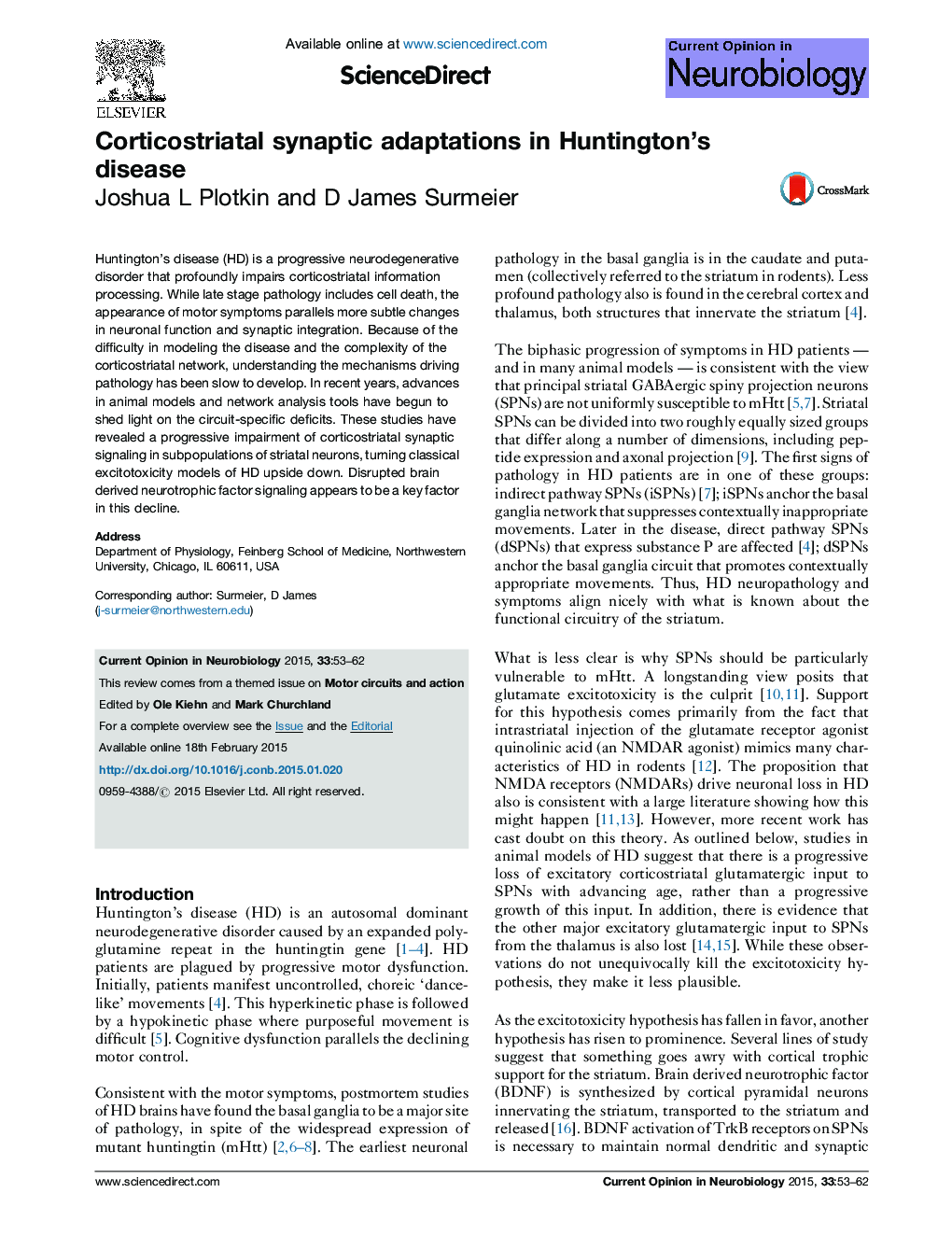| کد مقاله | کد نشریه | سال انتشار | مقاله انگلیسی | نسخه تمام متن |
|---|---|---|---|---|
| 6266466 | 1614516 | 2015 | 10 صفحه PDF | دانلود رایگان |

- Advances in genetic mouse models and tools have led to new insights about HD.
- Recent work suggests a progressive decline in corticostriatal signaling in HD.
- Reduced corticostriatal signaling is driven by autonomous and network mechanisms.
- Deficits in BDNF signaling leads to synaptic pathogenesis and striatal death in HD.
Huntington's disease (HD) is a progressive neurodegenerative disorder that profoundly impairs corticostriatal information processing. While late stage pathology includes cell death, the appearance of motor symptoms parallels more subtle changes in neuronal function and synaptic integration. Because of the difficulty in modeling the disease and the complexity of the corticostriatal network, understanding the mechanisms driving pathology has been slow to develop. In recent years, advances in animal models and network analysis tools have begun to shed light on the circuit-specific deficits. These studies have revealed a progressive impairment of corticostriatal synaptic signaling in subpopulations of striatal neurons, turning classical excitotoxicity models of HD upside down. Disrupted brain derived neurotrophic factor signaling appears to be a key factor in this decline.
Journal: Current Opinion in Neurobiology - Volume 33, August 2015, Pages 53-62